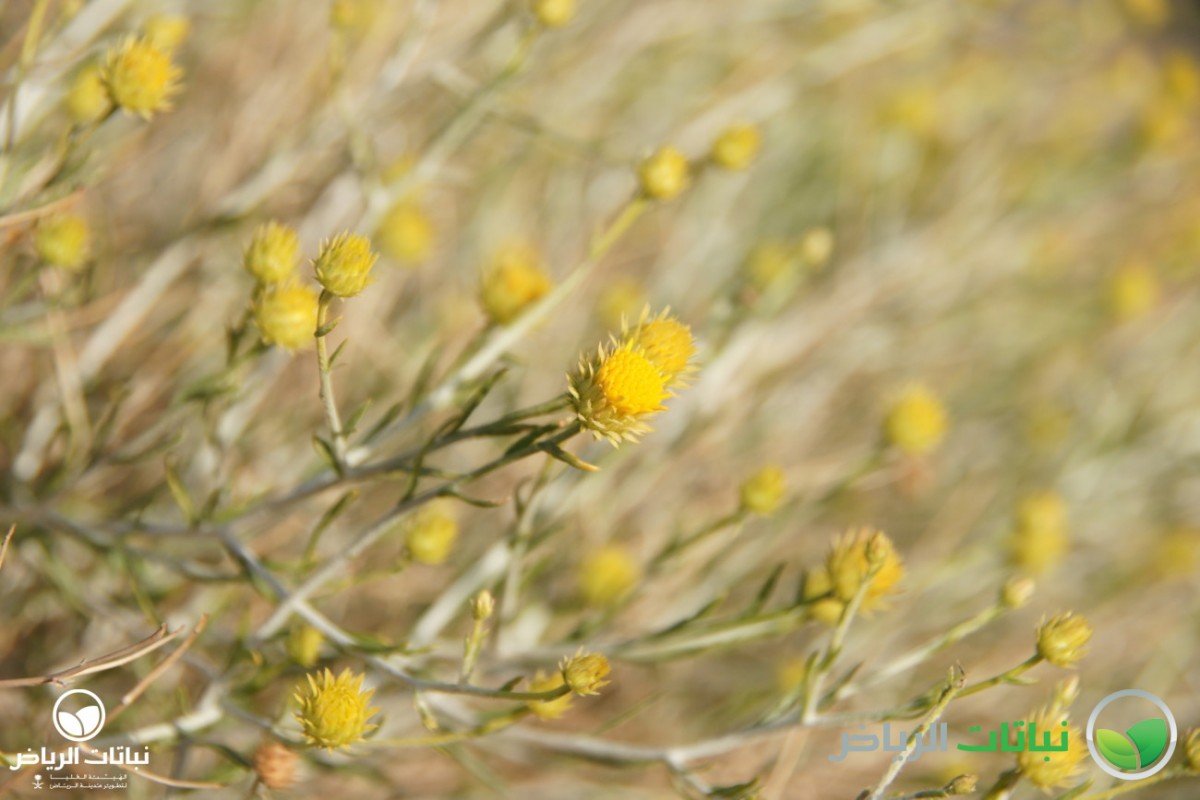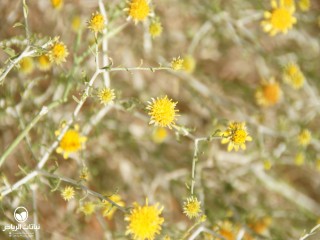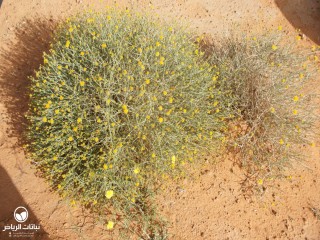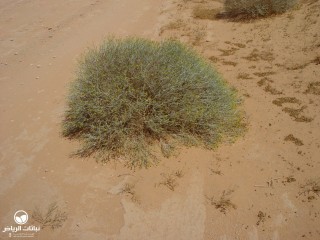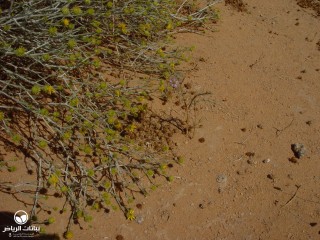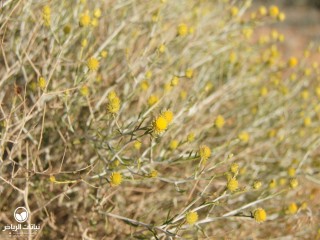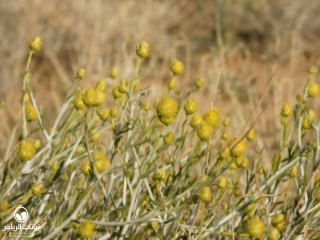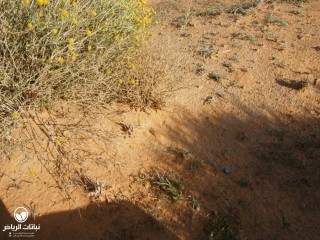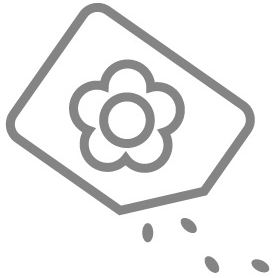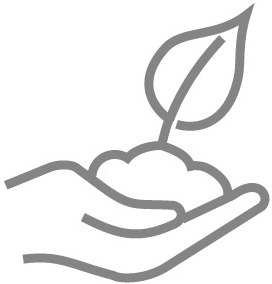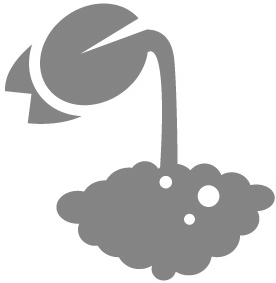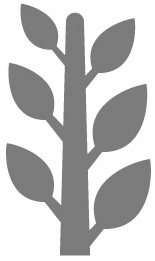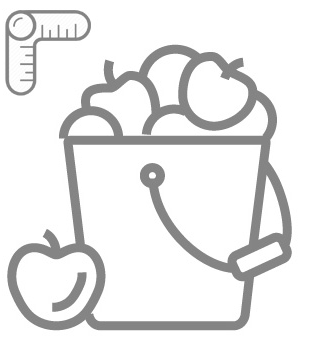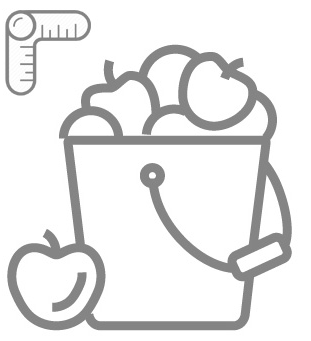Riyadh Plants
Yellow Desert Daisy, Arfaj
Rhanterium epapposum is known locally as arfaj. It is native to the Arabian peninsula and Kuwait, where it is that country’s national flower. Arfaj is a bushy dwarf shrub with a round regular shape growing to between 40 and 80 cm high. The branches are silvery white, and the leaves are small, lanceolate and with small spikes. The leaves are arranged alternately. The small yellow flowers appear in spring. The fruits are numerous, and each contains six to eight seeds. They are distributed by wind or water. The seeds stay dormant in the soil until conditions arise which are optimal for germination and growth. The shrub has long tap roots. It grows in silty, sandy and gravelly soil, and is highly salt-tolerant. All these characteristics are indicative of the plant’s extraordinary adaptation to the harsh desert conditions. Arfaj can be found very often in and around Arriyadh, where it is grazed by camels. It is one of the characteristic plants in this region. No maintenance is required following establishment. Because it is an indigenous plant, Rhanterium is highly suitable for the rehabilitation of natural plant cover, it is very valuable in the open country as coloniser, bank stabiliser and for environmental consolidation. It can be used as a groundcover or in grouped planting. In natural locations, however, it will propagate by self-seeding. It is also effective for natural themes such as Wadi Hanifah. With some irrigation, the foliage will remain green on the shrub in summer.
